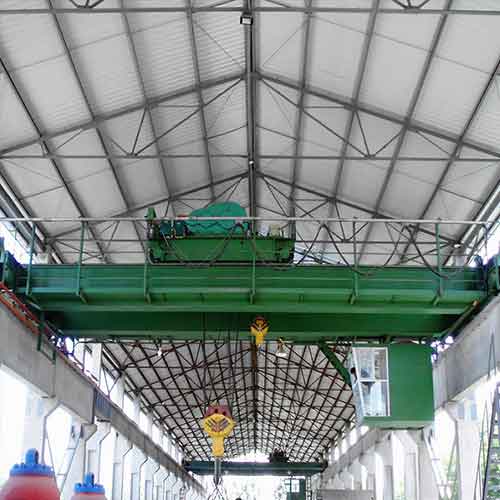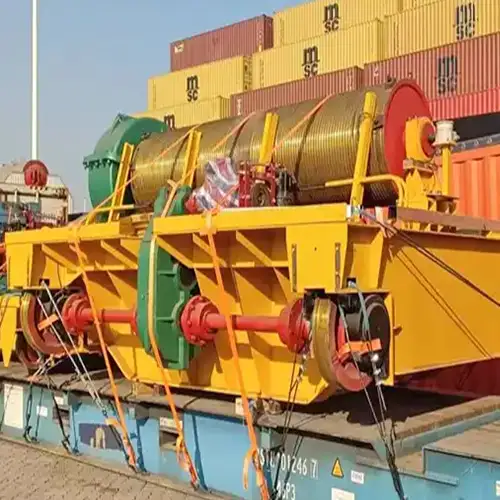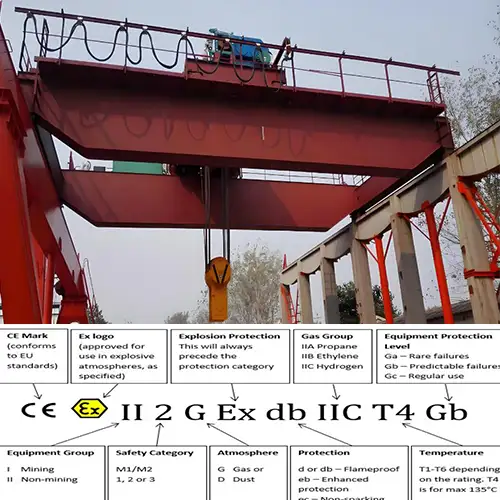What Really Needs to Be Explosion-Proof in Explosion-Proof Cranes
Ultimate guide for buyers to ensure safety and compliance with the right explosion-proof components in hazardous environments.Get explosion proof crane!
Category: Featured
Your Trusted Explosion Proof Overhead Crane Manufacturer & Supplier
What Really Needs to Be Explosion-Proof in an Explosion-Proof Crane?
A Buyer's Guide to Critical Components for Hazardous Environments
Overview of Explosion-Proof Cranes and Their Critical Role in Hazardous Environments
Explosion-proof cranes are designed to operate in environments where flammable gases, dust, or vapors may be present. These environments, such as chemical plants, oil refineries, or mining operations, pose a significant risk of ignition, which could lead to catastrophic explosions. Explosion-proof cranes ensure safety by containing or preventing any sparks, heat, or energy from escaping the crane's critical components.
In these hazardous environments, it is crucial to have equipment that not only performs effectively but also minimizes the risk of igniting explosive materials. Explosion-proof cranes are built with special features, such as sealed enclosures and spark-resistant parts, that are specifically designed to work safely in these conditions.
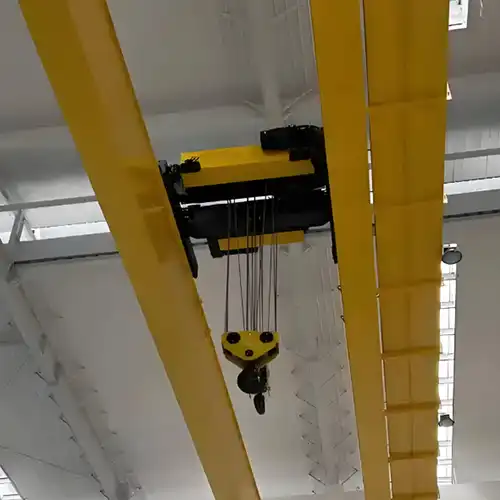
explosion proof crane euroepan style with explosion proof hoist - explosion proof crane kit 5 ton, 15 ton overhead crane kit , 40 ton overhead bridge crane kit projects
Not All Crane Components Need to Be Explosion-Proof
It’s important to note that not every part of an explosion-proof crane needs to meet explosion-proof standards. Only the components that could potentially create an ignition source — such as electrical parts, motors, and controls — need to be designed to contain or prevent sparks or heat buildup.
Mechanical components, such as the crane structure, hooks, or wheels, might not need to be explosion-proof, unless they’re working in an environment with combustible dust or gases. Instead, these parts can be made from materials that are less likely to spark, reducing the risk of ignition.
Industries That Require Explosion-Proof Cranes
Explosion-proof cranes are essential in several industries where hazardous environments are present. Some of the key industries that require these specialized cranes include:
- Oil & Gas: In refineries, gas plants, and offshore platforms, explosion-proof cranes are critical for safely handling equipment and materials that could ignite due to the presence of volatile gases or liquids.
- Chemical Manufacturing: Chemical plants often deal with hazardous substances that can easily combust. Explosion-proof cranes are necessary to safely handle chemicals, prevent accidents, and ensure compliance with safety regulations.
- Mining: In mining operations, particularly in coal mines, dust and gases can create a hazardous atmosphere. Explosion-proof cranes are used to lift and transport equipment safely within these potentially explosive environments.
- Paint Shops and Coating Facilities: These environments involve the use of flammable solvents and paints, making explosion-proof cranes essential for preventing fires or explosions during material handling.
In these industries, explosion-proof cranes play a critical role in maintaining a safe working environment, protecting both people and property from the dangers of combustible materials.
| Component | Gas-Explosive Areas | Dust-Explosive Areas | Zone Classifications | When Explosion-Proofing is Required |
|---|---|---|---|---|
| Explosion-Proof Motors | Yes | Yes | Zone 0, Zone 1, Zone 2 | All powered components (hoists, trolleys, travel motors) |
| Explosion-Proof Control Panels | Yes | Yes | Zone 0, Zone 1, Zone 2 | Control panels, junction boxes, distribution systems |
| Explosion-Proof Wiring | Yes | Yes | Zone 0, Zone 1, Zone 2 | All electrical wiring in hazardous zones, especially Zone 1 & Zone 2 |
| Spark-Resistant Mechanical Parts | No | Yes | Zone 20, Zone 21, Zone 22 | In high-dust areas with combustible dust or volatile gases |
| Flameproof/Anti-Spark Brakes | Yes | Yes | Zone 0, Zone 1, Zone 2 | Mechanical and electrical braking systems |
| Limit Switches & Safety Sensors | Yes | Yes | Zone 0, Zone 1, Zone 2 | End-of-travel switches, position sensors, safety cut-offs |
| Pendant Controls (Anti-Spark) | Yes | Yes | Zone 0, Zone 1, Zone 2 | Handheld or fixed pendant controls, especially in gas-rich environments |
| Remote Controls | Yes | Yes | Zone 0, Zone 1, Zone 2 | Wireless control units in hazardous environments |
| Structural Frame Coatings | No | Optional (dust exposure) | Zone 21, Zone 22 | For mechanical systems in areas with combustible dust |
| Auxiliary Lifting Equipment | Optional | Yes | Zone 20, Zone 21, Zone 22 | Lifting equipment exposed to hazardous gases or dust |
Key Components That Must Be Explosion-Proof
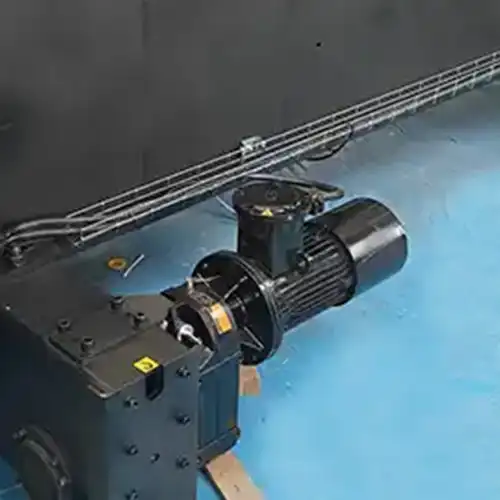
Explosion-Proof Electric Motors
Why They're Needed: Electric motors are a big deal when it comes to safety in hazardous areas. They can heat up and even cause sparks. If there's flammable gas or dust around, those sparks could lead to an explosion. That's why it's so important to have explosion-proof motors.
Explosion-Proof Features:
- Sealed Enclosures: These motors come with sealed cases to make sure sparks or heat don't escape. Even if something goes wrong inside the motor, it won't affect the surrounding area.
- Temperature Class Ratings: The motor is built to handle specific temperature limits. This helps prevent overheating that could cause dangerous sparks.
- Certifications (ATEX, IECEx): These motors are certified to meet strict safety standards like ATEX or IECEx. This tells you they're up to the task and safe for hazardous environments.
Where You Need Them:
- Hoist Motors: These are the motors that lift and lower loads. They’re directly exposed to the risk of sparking in hazardous areas.
- Trolley Motors: These motors move the crane across the workshop. They're just as important and need to be explosion-proof too.
- Crane Travel Motors: These motors move the crane along its track. Like the others, they need to be explosion-proof to keep things safe.
- Other Powered Components: Any motorized part of the crane needs to be explosion-proof, whether it’s a winch, drum motor, or similar.
Flameproof Electrical Control Panels and Components
Why They’re Needed: Electrical components like contactors, relays, and inverters are essential for crane operation. But they can also cause sparks during use. If sparks fly in the wrong environment, it could cause an explosion. That’s where explosion-proof control panels come in.
Explosion-Proof Features:
- Flameproof Enclosures: These enclosures are built to keep sparks contained. If a spark occurs inside, the enclosure keeps it from getting out and igniting the area.
- Proper Sealing: Control panels and components need to be sealed tightly to keep out flammable gas or dust. This ensures no risk of ignition from outside.
- Pressure Testing: These panels are tested to make sure they can handle internal pressure safely, without risking any explosion.
Where You Need Them:
- Control Panels: The main control system for your crane must be housed in an explosion-proof panel. This is where all the electrical systems are controlled.
- Junction Boxes: These house the connections for cables and electrical circuits. They’re high-risk areas, so they also need to be explosion-proof.
- Distribution Systems: Any part of the crane’s electrical distribution system—like transformers and switches—needs explosion-proof protection. This keeps the whole system safe and secure.
By ensuring that these critical components are explosion-proof, you’re greatly reducing the chance of any hazards in dangerous work environments. It’s all about keeping things safe and preventing accidents.
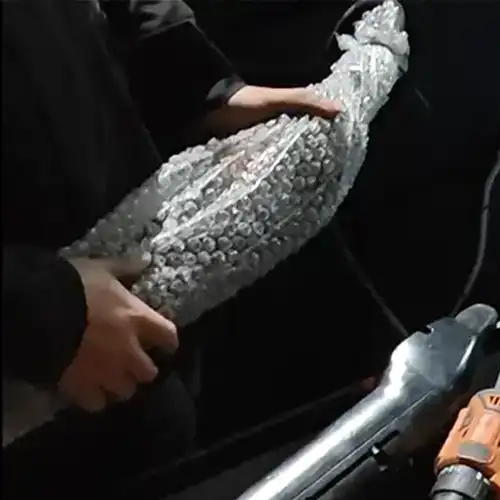
Anti-Spark Pendant Controls and Radio Remote Controls
Why They're Needed: Operator controls are crucial for crane operation. But, these controls can also be risky. Electrical circuits in pendant controls and remote controls can generate sparks, which can ignite gases or dust in hazardous environments. That's why using anti-spark or explosion-proof controls is essential.
Explosion-Proof Features:
- Anti-static or Flameproof Casings: Pendant controls and remote units come with special casings that prevent sparks and are resistant to flames. This ensures that no sparks escape when operators control the crane.
- Specialized Switches: These controls are designed with specialized switches that can handle hazardous environments safely. These switches are made to not generate sparks under normal operation.
- Wireless Controls: Radio remote controls offer an additional layer of safety. Wireless controls allow operators to work from a safe distance, reducing their exposure to dangerous zones while still maintaining full control of the crane.
Where You Need Them:
- Pendant Stations: These are the typical control units used by operators to move the crane. They must have anti-spark and explosion-proof features.
- Remote Control Units: Handheld remote controls for cranes should also be explosion-proof to ensure sparks are not generated when operators use them.
- Handheld Operator Controls: Any handheld devices used by operators for crane operation in hazardous zones need to be fitted with explosion-proof features to prevent ignition risks.
Intrinsically Safe Wiring and Cable Glands
Why They’re Needed: Wiring and connectors are critical for crane function, but improperly insulated wiring can lead to sparks or short circuits, especially in hazardous areas. Sparks in a risky environment could ignite flammable gases or dust. That’s why explosion-proof wiring and cable glands are a must.
Explosion-Proof Features:
- Explosion-Proof Cable Glands: These cable glands are designed to prevent sparks or flames from escaping the cable and reaching hazardous areas. They seal off the cables where they pass through walls or panels.
- Shielded Cables: Shielded cables are designed to protect the wiring from any external interference and prevent sparks from escaping. This helps maintain safe electrical conductivity and protects against accidental ignitions.
- Flexible Conduits: Flexible conduits ensure that wiring can move or bend without breaking the seal. These conduits are designed to contain sparks and prevent the spread of heat that might ignite flammable materials.
Where You Need Them:
- All Wiring in Hazardous Zones: Any wiring in hazardous zones must be explosion-proof, especially in Zones 1 and 2, where the risk of explosion is higher. These zones require extra protection for electrical systems.
- Especially in Zones 1 and 2: These are the most hazardous areas, where there’s a higher likelihood of exposure to flammable gases or dust. Properly protecting all wiring and cables in these zones is essential to maintain safety.
Ensuring that all wiring, cable glands, and operator controls are explosion-proof is vital to protecting both the crane and the people operating it in hazardous environments. Safety is always the priority!
Spark-Resistant Braking Systems
Why They’re Needed: When cranes move heavy loads, the braking system is essential. However, friction from the brakes can generate sparks. In hazardous environments, these sparks can be dangerous if they come into contact with flammable materials. That’s why spark-resistant braking systems are crucial.
Explosion-Proof Features:
- Sealed or Anti-Spark Linings: Spark-resistant braking systems are equipped with sealed linings that prevent sparks from escaping when the brakes are applied. These linings help absorb friction without causing ignition risks.
- Flameproof Electromagnetic Brakes: Electromagnetic brakes that are flameproof prevent any chance of a spark being generated during operation. These brakes are specially designed to keep the environment safe while the crane is in use.
Where You Need Them:
- Mechanical Braking Systems: The braking system that directly controls the movement of the crane’s mechanical parts must have spark-resistant features to ensure there are no risks of sparks during operation.
- Electrical Braking Systems: Electrical brakes that are used to control speed and movement also need to be spark-proof. These systems must be designed to contain any potential sparks during the braking process.
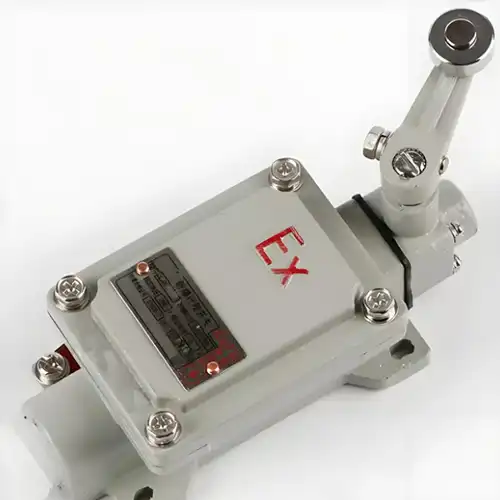
Limit Switches and Safety Sensors
Why They're Needed: Limit switches and safety sensors are used to control the crane's movement, ensuring it doesn't go beyond its safe operating limits. These electrical components, however, can sometimes generate sparks, especially if they're malfunctioning or during normal operation. In a hazardous environment, even small sparks can lead to a big problem.
Explosion-Proof Features:
- Intrinsically Safe Limit Switches: These switches are designed to be safe in explosive environments. They ensure that the switch won't generate any sparks that could ignite hazardous materials.
- Explosion-Proof Enclosures: Limit switches and sensors must be housed in explosion-proof enclosures. These enclosures prevent any sparks from escaping the internal components, keeping the environment safe.
Where You Need Them:
- End-of-Travel Switches: These switches are used to stop the crane at the end of its travel path. They need to be explosion-proof to avoid triggering sparks during the stopping process.
- Position Sensors: Sensors that monitor the crane's position must also be explosion-proof to ensure they don’t generate any sparks that could cause an ignition risk.
- Safety Cut-Offs: Any safety sensors that automatically shut down the crane if it’s operating beyond safe limits must also be explosion-proof to ensure there’s no risk of spark or ignition.
Having spark-resistant braking systems and explosion-proof limit switches and safety sensors ensures that the crane operates smoothly without posing any risk of ignition, even in highly volatile environments. It’s all about making sure everything works safely!
Optional Components That May Need to Be Explosion-Proof
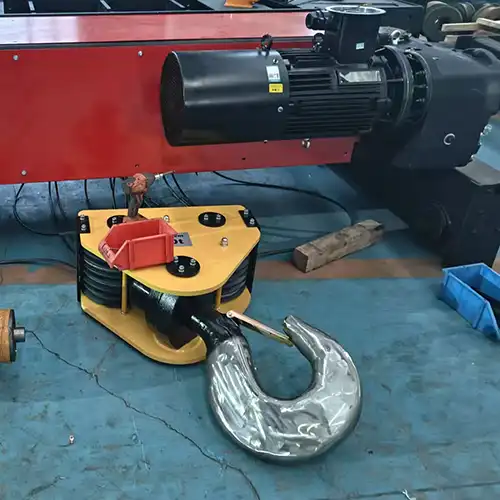
Hooks, Wheels, and Gears
Risk Factor: While mechanical components like hooks, wheels, and gears don't usually create sparks, they can if they're made from the wrong materials. In hazardous environments, sparks from these parts could lead to an ignition risk, especially in areas where flammable dust or gases are present.
When They're Required:
- If your crane operates in high-dust or gas zones, you'll need to use anti-spark materials for hooks, wheels, and gears. Materials such as bronze, brass, or copper-aluminum alloys are great choices because they reduce the likelihood of sparks being generated.
Where You’ll Need Them:
- Areas with Combustible Dust or Volatile Gases: If the crane operates in an environment where combustible dust (such as grain dust or sawdust) or volatile gases (such as those found in chemical plants or oil refineries) are common, the mechanical parts should be made from spark-resistant materials. check more on explosion proof hook or contact us to get your design1
Crane Structure and Frames
Risk Factor: Generally, the crane’s frame itself doesn’t pose an ignition risk. However, in some environments, especially those with flammable dust or gases, it may need additional protection. Without proper coatings or materials, the frame could still be a source of risk, especially if it's exposed to friction or other stresses.
When It’s Required:
- In Zone 21 (areas with a high likelihood of combustible dust) or Zone 22 (areas where combustible dust is present only occasionally), crane frames may need to be treated with spark-resistant coatings or made from materials that reduce the chance of ignition. This helps prevent any accidental sparks that might ignite surrounding hazardous materials.
Where You’ll Need Them:
- In Zone 21 or Zone 22: These areas are especially risky due to the presence of dust or gases that can catch fire or explode. A treated crane frame can add another layer of protection in these environments.
Auxiliary Equipment (e.g., Lifting Devices, Hooks, Slings)
Risk Factor: Auxiliary equipment such as lifting devices, hooks, and slings generally doesn’t need explosion-proofing. However, when these parts are exposed to hazardous environments, they could become a potential risk if they interact with flammable materials or are subject to friction that could generate sparks.
When It’s Required:
- If the lifting equipment is exposed to hazardous gases or dust, you’ll need to ensure it’s explosion-proof or spark-resistant. In areas with high concentrations of flammable materials, these components should be carefully chosen to minimize any risk of ignition.
Where You’ll Need Them:
- Zones with Significant Exposure to Hazardous Gases or Dust: If your crane is operating in environments where there's a high concentration of gases or combustible dust (like chemical plants, oil refineries, or coal mines), make sure that lifting devices and other auxiliary equipment are built to withstand those conditions without sparking.
In hazardous environments, not every component of a crane requires explosion-proofing, but there are critical areas where extra care should be taken. Whether it's the material used for hooks, the treatment for crane frames, or the protection of auxiliary lifting equipment, it’s important to assess the environment carefully. When in doubt, opting for explosion-proof features ensures a safer and more reliable crane operation. Always prioritize safety by understanding when and where these optional components need protection!
Conditions or Applications Requiring All Components to Be Explosion-Proof
Presence of Flammable Gases or Vapors
Why All Components Need Protection: In environments like oil refineries, gas processing plants, and chemical plants, flammable gases or vapors are always present. These gases can easily ignite if any electrical component generates a spark or heat. When you're working in such environments, there is no room for error—every crane component must be explosion-proof.
When It’s Required:
Zone 0, Zone 1, and Zone 2 Areas: These zones indicate the level of risk posed by flammable gases or vapors.
- Zone 0 is the highest-risk area, where explosive gases are always present.
- Zone 1 is where explosive gases are likely to occur during normal operation.
- Zone 2 is where explosive gases are not typically present but may occur in abnormal conditions.
In these zones, all crane components—motors, controls, wiring, and even operator controls—must be explosion-proof and certified to avoid any ignition risks.
Dusty Environments
Why All Components Need Protection: Dust particles, especially those that are flammable, can build up in certain environments like coal mines, grain silos, or powder processing facilities. When these particles mix with air, they form an explosive mixture. Even a small spark from a crane could ignite the dust and lead to a dangerous explosion.
When It’s Required:
Zone 20, Zone 21, and Zone 22 Areas: These zones represent the degree of dust hazard:
- Zone 20 is the highest-risk area, where combustible dust is always present.
- Zone 21 is where dust is likely to be present during normal operations.
- Zone 22 is where dust might be present only occasionally or under abnormal conditions.
In these zones, it’s essential to have all crane components explosion-proofed. This includes motors, control systems, and any exposed mechanical parts.
Chemical Manufacturing or Storage Areas
Why All Components Need Protection: Chemical manufacturing and storage areas are high-risk zones where chemicals are stored or processed. Some chemicals are extremely volatile and can easily ignite if exposed to sparks, heat, or friction. In these environments, any electrical component or part that generates heat could lead to a catastrophic explosion.
When It’s Required:
In environments where hazardous chemicals are involved, all crane components must be explosion-proof to prevent any sparks or heat buildup that could trigger an explosion. This includes:
- Motors, electrical components, and control panels.
- Mechanical parts that might cause friction and spark.
By ensuring all components are explosion-proof, you greatly reduce the risk of triggering a hazardous chemical reaction that could endanger lives and cause damage.
In high-risk environments—whether it’s due to flammable gases, combustible dust, or chemicals—safety is key. Ensuring all crane components are explosion-proof is not just a precaution; it’s a necessity. By following proper explosion-proofing standards, you create a safer working environment that protects both people and equipment.
Conditions or Applications Where Not All Components Need to Be Explosion-Proof
Low-Risk Environments
Why Some Components Don’t Need Protection: In low-risk environments, such as certain industrial warehouses or facilities, the chances of encountering combustible gases or dust are minimal. These environments might not require every crane component to be explosion-proof. In fact, many of the mechanical and structural components can function safely without explosion-proofing, as the risk of ignition is very low.
When Explosion-Proofing is Still Needed:
- Electrical Components: While mechanical parts might not need protection, electrical components like motors, control panels, and wiring still need to be explosion-proofed. Even in low-risk environments, these parts are the most likely to create sparks or generate heat that could cause an issue.
For most operations in low-risk environments, explosion-proofing is necessary for the electrical system, but it may not be required for the crane structure or mechanical systems.
Outdoor Areas with Minimal Hazardous Exposure
Why Some Components Don’t Need Protection: In outdoor environments where the exposure to flammable gases or dust is either infrequent or unlikely, it’s generally safe to operate a crane without explosion-proofing all components. For example, in open-air industrial settings or construction sites, the risk of encountering hazardous materials is minimal.
When Explosion-Proofing is Still Needed:
- Electrical Components: Even in outdoor areas, explosion-proofing should be focused on electrical components—especially motors, control panels, and wiring. These parts should be protected to ensure safe operation in all conditions.
- Crane Structure and Mechanical Systems: Since the crane’s frame and mechanical systems are less likely to encounter dangerous conditions in these environments, they typically don’t need to be explosion-proof. Only the electrical parts should be protected in these cases.
Zones with Lower Hazardous Risk (e.g., Zone 2 or Zone 22)
Why Some Components Don’t Need Protection: In zones with lower hazardous risk, like Zone 2 (where explosive gases are not likely to occur regularly) or Zone 22 (where combustible dust is present only occasionally), not every component requires explosion-proofing. These zones are considered safer compared to higher-risk areas, and mechanical parts and crane structures are less likely to pose a danger.
When Explosion-Proofing is Still Needed:
- Electrical Components: In these zones, explosion-proofing is still essential for electrical components, such as motors and control systems. Since these are the parts most likely to cause ignition, they need to be protected regardless of the zone classification.
- Mechanical Components and Structural Elements: For zones like Zone 2 and Zone 22, the mechanical components (like gears, hooks, and wheels) and structural elements of the crane may not need to be explosion-proof. However, it’s still important to check the specific conditions of the site to ensure the proper safety measures are in place.
Not every crane component needs to be explosion-proof in all environments. In low-risk areas, outdoor spaces with minimal hazardous exposure, or zones with lower risk, you can often get by with explosion-proofing only the critical electrical components. However, always assess the specific conditions of your environment to determine the right level of protection. Safety is still the priority, even when the risk is lower.
Certification and Compliance
When it comes to explosion-proof cranes, certification is key to ensuring that the equipment meets safety standards for hazardous environments. Different regions have their own regulations and certifications, but all aim to prevent accidents caused by explosive gases or dust.
- ATEX (EU): This standard applies to equipment designed for use in explosive atmospheres within the European Union. It ensures that products are safe to operate in environments where there’s a risk of explosion due to gases, vapors, or dust.
- IECEx (International): This global certification is recognized worldwide and ensures that equipment used in hazardous areas is safe to operate. It applies to industries in many countries, offering a consistent standard for explosion protection.
- NEC Class/Division (USA): In the United States, the National Electrical Code (NEC) defines requirements for electrical equipment in explosive environments. These classifications (Class/Division) determine what types of equipment are suitable for use in specific hazardous locations, helping to prevent accidents in industries such as oil, gas, and chemicals.
Understanding Zones and Classifications
Explosion-proofing is not a one-size-fits-all solution. The standards and certifications above are closely tied to zone classifications, which help determine how dangerous a given environment is. These zones indicate the likelihood of explosive gases, vapors, or dust being present, and they define the level of protection needed for equipment.
Zone 0, Zone 1, Zone 2 (Gas):
- Zone 0: Area where explosive gases or vapors are present continuously or for long periods.
- Zone 1: Area where explosive gases or vapors are likely to be present under normal operating conditions.
- Zone 2: Area where explosive gases or vapors are not likely to be present, but may occur under abnormal conditions.
Each zone requires different levels of explosion protection for electrical and mechanical components. For example, Zone 0 requires the highest level of protection, with all components needing to be explosion-proof.
Zone 20, Zone 21, Zone 22 (Dust):
- Zone 20: Area where combustible dust is present continuously or for long periods.
- Zone 21: Area where combustible dust is likely to occur in normal operations.
- Zone 22: Area where combustible dust is not likely to be present but may occur under abnormal conditions.
In these dusty environments, explosion-proofing is critical for all electrical components and some mechanical parts. The higher the zone number, the less risk of ignition, so the protection required may vary.
How to Select and Customize Your Explosion-Proof Crane for Your Application
Assess Your Environment and Hazardous Risks
Before diving into customization, the first step is understanding the environment where the crane will operate. This is crucial because different hazards require different solutions.
Identify the Type of Hazardous Environment:
- Are you dealing with flammable gases, dust, or both?
- Gases may require more attention to electrical components, while dust zones require extra care with mechanical parts.
Determine the Zone Classification:
Identify the zone classification for your environment:
- Gas Zones: Zone 0, Zone 1, Zone 2
- Dust Zones: Zone 20, Zone 21, Zone 22
The zone will dictate the level of explosion protection needed and the specific certifications your crane must meet.
Choose the Right Components Based on Your Application
Once you have a clear understanding of your environment, it's time to choose the components that match the hazardous risks.
For Gas-Explosive Areas:
- Explosion-Proof Motors: These are critical since motors can generate heat and sparks.
- Explosion-Proof Control Panels: Controls are essential in regulating the crane's operation, so they need to be safe in gas-rich environments.
- Explosion-Proof Wiring: Wiring should be carefully insulated to prevent any sparks that might trigger an explosion.
For Dust-Explosive Areas:
- Spark-Resistant Mechanical Components: Parts like hooks, wheels, and structural elements should be made from spark-resistant materials like bronze or copper-aluminum alloys.
- Explosion-Proofing for All Electrical Parts: Just like gas zones, electrical systems must be explosion-proof, but extra attention should be given to areas with high dust accumulation.
Consult with Certified Manufacturers
Choosing the right crane manufacturer is key to ensuring your crane meets all necessary standards. Work with trusted manufacturers, such as Yuantai Crane, who can provide expertise and tailor your crane to your specific needs.
- Customization to Match the Zone: Ensure that the manufacturer customizes the crane for your specific environment and hazardous zone. Every component should meet the zone classification and safety standards.
- Certification Requirements: Ensure all components meet the necessary certifications (ATEX, IECEx, NEC) for your facility’s regulatory needs.
Customization Options
Customization can take your explosion-proof crane to the next level by meeting specific operational needs.
Electrical Systems:
- Explosion-Proof Motors: Tailored to suit your environment and zone classification.
- Intrinsically Safe Wiring: Designed for safety, reducing the risk of sparks or shorts.
Mechanical Systems:
- Spark-Resistant Parts: Optional features like spark-resistant brakes and wheels can be included for extra safety.
- Remote Controls and Anti-Spark Brakes: These features add convenience and safety, allowing operators to control the crane without directly handling potentially hazardous components.
Future Considerations
Crane environments can change over time. It’s essential to plan for future upgrades or potential changes in hazardous conditions.
- Future Upgrades: Ensure that the crane’s design allows for flexibility if new safety standards are introduced or if the level of hazardous risk increases.
- Adaptation to Changing Conditions: Choose components that are easily adaptable, so your crane remains compliant as your environmental conditions evolve.
Selecting and customizing your explosion-proof crane involves a thorough understanding of your hazardous environment, zone classification, and the components needed for safety. Work closely with certified manufacturers to ensure all components meet certification requirements. Don’t forget to consider future needs, ensuring the crane remains adaptable as safety standards and environmental conditions evolve.
Conclusion
In hazardous environments, selecting the right explosion-proof crane components is essential to ensure safety and efficiency. Key components that require explosion-proofing include electric motors, control panels, wiring, and mechanical systems like hooks, wheels, and brakes. These parts help prevent sparks and heat buildup that could potentially ignite hazardous gases or dust.
However, not all crane components need to be explosion-proof. The type of environment and zone classification (Gas Zones 0, 1, 2 or Dust Zones 20, 21, 22) will determine the level of protection required. In certain low-risk environments, you may only need to focus on electrical components.
It’s crucial to tailor your crane configuration to match the specific hazardous conditions and application needs. By working with certified manufacturers, such as Yuantai Crane, you can customize your crane to ensure it’s fully compliant with safety standards like ATEX, IECEx, and NEC.
Ultimately, working with experts who understand the complexities of explosion-proof cranes and their certification requirements will give you peace of mind, knowing that your crane is built to protect both people and equipment in hazardous environments.
Here’s a quick reference table summarizing the key explosion-proof components and their applications based on the type of hazardous environment and zone classifications.
| Component | Required in Gas-Explosive Areas | Required in Dust-Explosive Areas | Zone Classifications | When Explosion-Proofing is Required |
|---|---|---|---|---|
| Explosion-Proof Motors | Yes | Yes | Zone 0, Zone 1, Zone 2 | All powered components (hoists, trolleys, travel motors) |
| Explosion-Proof Control Panels | Yes | Yes | Zone 0, Zone 1, Zone 2 | Control panels, junction boxes, distribution systems |
| Explosion-Proof Wiring | Yes | Yes | Zone 0, Zone 1, Zone 2 | All electrical wiring in hazardous zones, especially Zone 1 & Zone 2 |
| Spark-Resistant Mechanical Parts (Hooks, Wheels, Gears) | No | Yes | Zone 20, Zone 21, Zone 22 | In high-dust areas with combustible dust or volatile gases |
| Flameproof/Anti-Spark Brakes | Yes | Yes | Zone 0, Zone 1, Zone 2 | Mechanical and electrical braking systems |
| Limit Switches & Safety Sensors | Yes | Yes | Zone 0, Zone 1, Zone 2 | End-of-travel switches, position sensors, and safety cut-offs |
| Pendant Controls (Anti-Spark) | Yes | Yes | Zone 0, Zone 1, Zone 2 | Handheld or fixed pendant controls, especially in environments with flammable gases |
| Remote Controls | Yes | Yes | Zone 0, Zone 1, Zone 2 | Wireless control units in hazardous environments |
| Structural Frame Coatings | No | Optional (if exposed to dust) | Zone 21, Zone 22 | For mechanical systems in areas with combustible dust |
| Auxiliary Lifting Equipment (Hooks, Slings) | Optional | Yes | Zone 20, Zone 21, Zone 22 | Lifting equipment exposed to hazardous gases or dust |
This table can serve as a quick guide for determining which components need to be explosion-proof based on the specific environment and zone. Always consult with a certified explosion proof crane manufacturer for compliance with safety standards.
Related Products
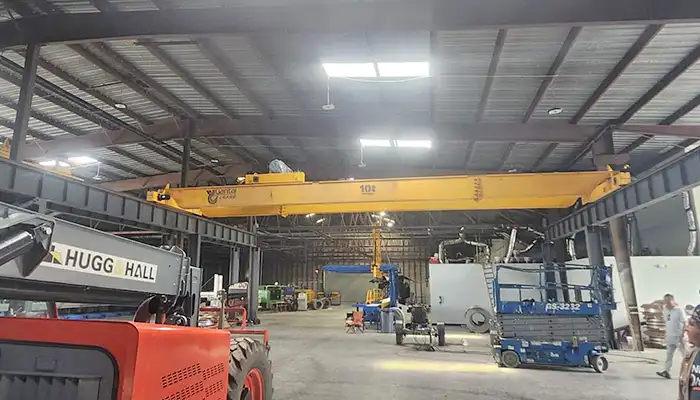
Affordable 10 ton double girder overhead crane with CD/MD hoist trolley, built for U.S. standards, ideal for construction and industrial lifting
Free consultation to Confirm Parameters & Specifications and Get
Latest Crane Price & Crane Rate.
- Types of overhead cranes : _______?
- Optional: Overhead travelling crane, goliath gantry crane,Slewing jib crane, Single girder or double girder crane,small portable crane or kbk crane, etc.
- Capacity of overhead crane: _______?
- Optional: 0.25ton, 0.5 ton, 1 ton, 2 ton, 3ton, 5 ton, 10 ton,15ton, 20ton, 25 ton, 30ton,35ton, up to 550ton, etc.
- Crane span & lifting height : _______?
- Crane travelling length : _____?
- Control of overhead crane:_______?
- Optional: pendant/ remote/cabin control
- Voltage supply of overhead crane:_____?
- Eg,: 380V50/60HZ,3Phase or others,etc.
- Application/usage of crane:_______?
- Eg,: Steel mill, ,injection mold, cement,stone, concrete,granite, general manufacturing, etc.
Just leave a message via the contact form and our hoist and crane engineer will contact you with in 24working hours.
Get In Touch

